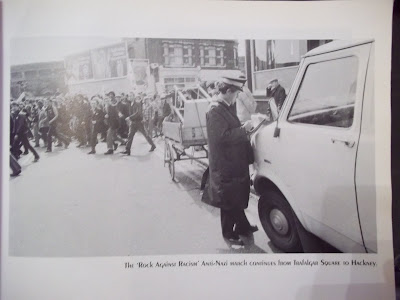The Foundations of Punk Rock
The beginnings of punk rock are often furiously debated. This is partially because everyone has different definition of punk rock, and partially because its foundation stones are found in several places.
"Punk Rock" was originally used to describe the garage musicians of the '60's. Bands like the Sonics were starting up and playing out with no musical or vocal instruction, and often limited skill. Because they didn't know the rules of music, they were able to break the rules.
The mid to late '60s saw the appearance of the Stooges and the MC5 in Detroit. They were raw, crude and often political. Their concerts were often violent affairs, and they were opening the eyes of the music world.
The Velvet Underground is the next piece in the puzzle. The Velvet Underground, managed by Andy Warhol, were producing music that often bordered on noise. They were expanding the definitions of music without even realizing it.
The final primary influence is found in the foundations of Glam Rock. Artists like David Bowie and the New York Dolls were dressing outrageously, living extravagantly and producing loud trashy rock and roll. Glam would end up splitting up its influence, doling out portions to hard rock, "hair metal" and punk rock.
New York: The First Punk Rock Scene
The first concrete punk rock scene appeared in the mid '70s in New York. Bands like The Ramones, Wayne County, Johnny Thunders and the Heartbreakers, Blondie and the Talking Heads were playing regularly in the Bowery District, most notably at CBGB.
The bands were unified by their location, camaraderie, and shared musical influences. They would all go on to develop their own styles and many would shift away from punk rock.
While the New York scene was reaching its heyday, punk was undergoing a separate creation story in London.
Meanwhile, Across the Pond
England's punk scene had political and economic roots. The economy in the United Kingdom was in poor shape, and unemployment rates were at an all-time high. England's youth were angry, rebellious and out of work. They had strong opinions and a lot of free time.
This is where the beginnings of punk fashion as we know it emerged, and they centered out of one shop. The shop was simply called SEX, and it was owned by Malcolm McClaren.
Malcolm McClaren had recently returned to London from the U.S., where he had unsuccessfully tried to reinvent the New York Dolls to sell his clothing. He was determined to do it again, but this time looked to the youths who worked and hung out in his shop to be his next project. This project would become the Sex Pistols, and they would develop a large following very quickly.
Enter The Bromley Contingent
Among the fans of the Sex Pistols was an outrageous bunch of young punks known as the Bromley Contingent. Named after the neighborhood they all came from, they were at the first Sex Pistols shows, and quickly realized they could do it themselves.
Within a year, the Bromleys had formed a large portion of the London Punk scene, including The Clash, The Slits, Siouxsie & the Banshees, Generation X (fronted by a young Billy Idol) and X-Ray Spex. The British punk scene was now in full swing.
The Punk Rock Explosion
By the late '70s, punk had finished its beginning and had emerged as a solid musical force. With its rise in popularity, punk began to split into numerous sub-genres. New musicians embraced the DIY movement and began to create their own individual scenes with specific sounds.
HISTORY OF PUNK ROCK FROM ABOUT.COM














































